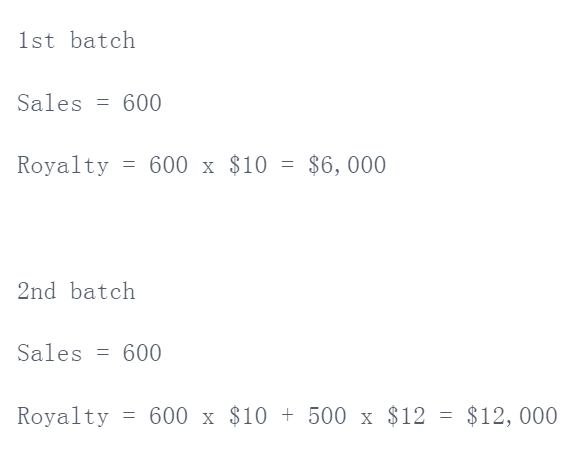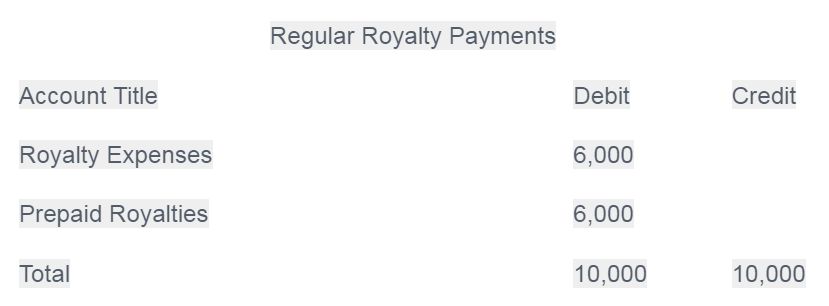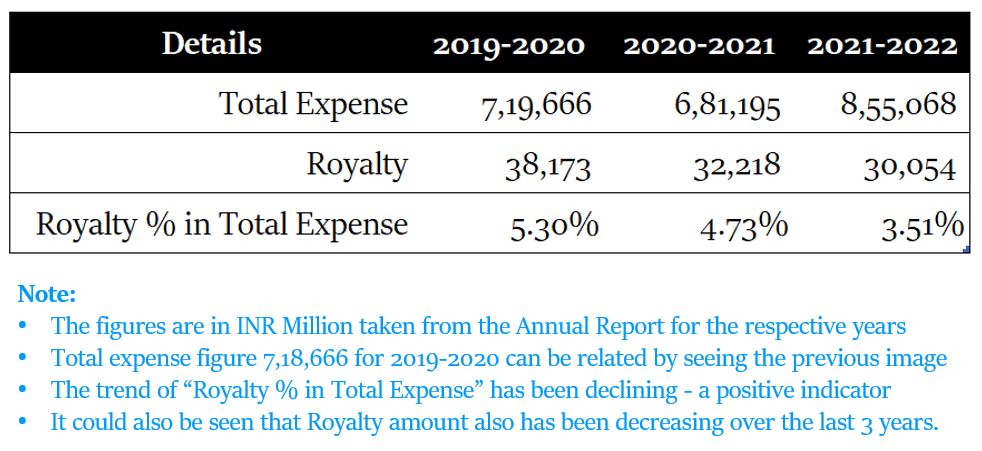Welcome to the world of stock photography! If you’re considering selling your images or illustrations, Alamy is a platform worth exploring. Known for its vast collection and flexible licensing, Alamy has become a go-to for many photographers and artists. But how does the royalty system work? In this post, we’ll break down the essentials of
How Royalties Are Calculated on Alamy

When it comes to making money from your photos on Alamy, understanding how royalties are calculated is key. Let’s dive into the details!
Alamy operates on a commission-based structure. This means that when your image is sold, you earn a percentage of the sale price. While other platforms might offer a flat rate per image or offer tiered percentages based on exclusivity, Alamy’s approach is centered around a sliding scale:
- 50% Commission for Contributors: Most contributors earn a solid 50% of the sale price. That’s right, half of the money made from sales goes straight to you!
- Higher Percentages: You can actually earn up to 60% commission for exclusive images. This means that if you choose to not sell your images on other platforms, you’ll get a bit of a bonus!
- Sales Channel Differences: The percentage can also vary depending on how the sale is made. For example, if your image sells via a subscription service, the rates might differ.
Let's not forget that Alamy also openly shares their royalty structure, making it clear how much you can expect to earn. You can track sales and earnings on your dashboard, which helps you stay on top of your finances as a contributor.
Here’s a quick breakdown of how it works:
| Sale Type | Your Percentage |
|---|---|
| Standard Sale | 50% |
| Exclusive Sale | 60% |
| Subscription Sale | Varies (typically lower) |
In terms of pricing, Alamy is known for having one of the most competitive rates in the industry. They provide a wide range of pricing options for buyers, which means your images have a chance to sell at a premium price point. And the best part? The more you upload, the wider your potential audience. Think about the volume: if you're selling images at a higher price range, those 50% and 60% commissions can really add up!
In summary, your earnings can be substantial depending on how you choose to market your work and the exclusivity agreements you opt into. Alamy’s flexible royalty structure is designed to benefit the contributors, allowing you to maximize your earnings from your creative endeavors. So, whether you’re just starting or you’re a seasoned veteran of stock photography, Alamy has routes for everyone to explore and earn! Keep experimenting with different subjects and styles to find your niche in the stock photography world.
Also Read This: Fast Money with Alamy How Quickly Can You See Results as a Contributor
3. Typical Royalty Percentages on Alamy

When you're diving into the world of stock photography and considering selling your images on Alamy, a key question often arises: What can I expect to earn? The good news is that Alamy tends to offer relatively generous royalty percentages compared to other platforms. Typically, photographers can expect to earn between 40% to 50% of the sale price of their images.
This percentage can greatly influence how you view your work. For example, if you manage to sell an image for $100, you could be looking at a neat sum of $40 to $50 in your pocket! This is a significant incentive for many photographers who are trying to monetize their work.
Here’s a quick breakdown of potential earnings on Alamy based on different sale prices:
- Image sold for $50: Earn $20 - $25
- Image sold for $100: Earn $40 - $50
- Image sold for $200: Earn $80 - $100
- Image sold for $500: Earn $200 - $250
This tiered commission structure is quite appealing, especially if you have a portfolio that can draw in consistent sales. However, it's essential to remember that these percentages can vary based on a few crucial factors, which we’ll explore in the next section.
Also Read This: Guide to Legally and Efficiently Downloading Photos from Alamy
4. Factors Influencing Your Royalty Rate

While understanding the typical earnings on Alamy is helpful, it's just as important to know what factors can affect your actual royalty rate. Various elements influence how much you earn, and being aware of these can help you optimize your sales strategy.
Here are several key factors that can impact your royalty rate on Alamy:
- Image Licensing Type: Alamy offers different licensing options such as 'Royalty Free' and 'Rights Managed.' Each type can result in varying earnings based on how customers choose to use your images.
- Exclusive vs. Non-Exclusive Content: If you list your images exclusively on Alamy, you may benefit from higher rates or promotional opportunities that could lead to increased visibility and sales.
- Quality and Demand: The quality of your images and how well they resonate with current market demands can affect sales performance. High-demand content that appeals to buyers can translate to more sales and, consequently, higher earnings.
- Promotions and Discounts: Keep an eye on Alamy's promotional periods. Sales and discounts may attract more buyers, but if your images are part of a promo, you might earn slightly less per sale.
- Market Trends: Staying updated on industry trends can help you tailor your portfolio. Images that are timely or relevant to current events may garner more sales, impacting your overall royalties.
By understanding these factors and adapting your strategy accordingly, you can maximize your earnings on Alamy. It's not just about uploading images; it's about positioning your work in a way that attracts buyers and optimizes your royalty potential!
Also Read This: Can You Use a Lumix G Camera to Upload Photos to Alamy
5. Strategies to Maximize Your Royalties from Alamy

When it comes to selling your images on Alamy, the goal is simple: maximize your royalties. While Alamy provides a solid platform for photographers and artists, getting the most out of your contributions requires strategy. Here are some effective tactics you can employ:
- Focus on Quality: The foundation of sales starts with high-quality images. Invest time in enhancing your photography skills, understanding lighting, and using post-processing techniques. The better your images, the more likely they are to stand out.
- Keywords Matter: Properly tagging your images with relevant keywords makes them searchable. Spend some time brainstorming keywords that accurately describe your photo while also considering what buyers might search for. Use a mix of general and specific terms to cover all bases.
- Build a Diverse Portfolio: Don't box yourself into one niche. Diversifying your portfolio can attract a wider variety of buyers. For example, if you specialize in travel photography, consider adding landscapes, cityscapes, or cultural events to your collection.
- Stay Updated on Trends: Keeping an eye on current trends in the market can inform your photography choices. Use tools like social media, search engines, and stock market reports to see what images are currently in demand.
- Leverage Social Media: Promote your Alamy portfolio through social media channels. Share your images on Instagram, Pinterest, or Facebook, and direct followers to your Alamy profile. Building an audience can significantly increase your sales potential.
- Understand Licensing Options: Familiarize yourself with the various licensing options offered by Alamy. Use this knowledge to price your images appropriately, and consider offering exclusive content that buyers can’t find elsewhere.
- Monitor Your Analytics: Alamy provides analytics tools to help you track your sales. Use this data to understand which images are performing best and adjust your offerings accordingly. Over time, you’ll gain insights into what works and what doesn’t.
Implementing these strategies can help ensure you’re not just another contributor on Alamy. With quality images, clever marketing, and a keen understanding of the market, you can significantly boost your potential earnings on the platform.
Also Read This: Step-by-Step Guide to Selling Photos on Alamy for Passive Income
6. Comparing Alamy's Royalties with Other Stock Photo Platforms
When considering where to sell your images, understanding how Alamy’s royalty structure stacks up against other stock photo platforms is crucial. Here’s a comparative look at some of the most popular platforms alongside Alamy.
| Platform | Royalty Percentage | Key Features |
|---|---|---|
| Alamy | 50% of net sales | Large customer base, flexible pricing, rights-managed and royalty-free options |
| Shutterstock | 15% to 40% | Subscription model, high-volume exposure, longer tenure often leads to higher percentages |
| Adobe Stock | 33% for photos | Integration with Creative Cloud, strong visibility among designers |
| iStock (Getty Images) | 15% to 45% | Tiered royalty based on exclusivity, vast customer reach, strong brand recognition |
As you can see, Alamy offers a competitive royalty structure, particularly with its straight 50% share. This can be significantly more attractive compared to platforms like Shutterstock, where percentages vary depending on the volume of sales or your tier status. However, consider the different audiences and usability of each platform.
While Alamy is well-regarded for its user-friendly interface and extensive library, other platforms like Adobe Stock may offer better integration for creative professionals using Adobe software, which can bring in a different clientele focused on commercial and editorial projects.
Ultimately, the choice depends on your photography style and sales strategy. It might even be worthwhile to diversify your portfolio across several platforms to maximize exposure and, subsequently, your royalties.
Conclusion: What to Expect from Your Alamy Royalties
Understanding the structure of royalties from Alamy is crucial for photographers and content creators looking to monetize their work effectively. Here are the key takeaways you should keep in mind:
- Percentage Breakdown: Alamy typically offers a commission ranging from *25% to 50% based on the type of license sold and whether the sale was through an exclusive or non-exclusive arrangement.
- Types of Sales:
- Royalty-Free (RF) sales generally yield lower commission rates.
- Rights-Managed (RM)* content can command higher fees and potentially provide greater earnings for unique images.
- Performance Factors: Your earnings can be influenced by factors like:
- The quality and uniqueness of your images.
- Time and effort invested in marketing your work.
- Trends and demands within the stock photo market.
To maximize your royalty earnings from Alamy, focus on producing high-quality, in-demand content and diversify your portfolio. Regularly update your submissions to stay relevant in a competitive marketplace.
In conclusion, understanding Alamy's royalty structure allows you to set realistic expectations and develop strategies that align with your financial goals, ultimately leading to a more profitable experience as a contributor.
 admin
admin








